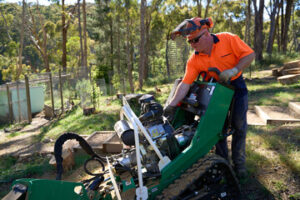Keeping up with regular eye exams can help you spot problems like cataracts, glaucoma, or other diseases that might not be easily noticeable to the naked eye. These appointments are also a good time to make sure you’re using proper eye protection, including sunglasses and protective eyewear.

The best way to find a qualified and caring eye doctor is by asking for referrals. Ask your friends, coworkers, and family for recommendations, and consider these factors before making a decision: Contact Maryland Eye Care Center now!
Some patients require medical attention beyond the scope of an optometrist’s practice. Getting these patients referred to ophthalmologists or other specialists is an essential part of patient care. Some insurance policies also require a referral from a primary care doctor before patients can see an eye specialist. This helps to regulate care and keep costs down for all parties involved.
Building a referral network with ophthalmologists, family physicians and other doctors in your area is key to gaining more medical referrals. This can be accomplished by attending professional conferences, hosting dinners and delivering continuing education lectures. However, be careful not to provide expensive meals as this may violate anti-kickback regulations.
If you are struggling to build a medical referral network, it may be helpful to hire an outside consultant to teach your team how to better manage these patients. These consultants can help you identify which medical providers are best suited for a given case, as well as train your staff to communicate more effectively with patients who are being referred out.
Getting MDs to refer to you is not always easy, especially when they have many choices in your community. It is important to establish a strong, mutually beneficial relationship. It is a good idea to ask for a meeting with the physician to discuss your practice and its services. This will allow the MD to feel comfortable referring patients to you.
Once you have a meeting with an MD, make sure to follow up with a letter or email with a summary of the visit. This will ensure that the MD will think of you when they are referring patients to a medical eye specialist. This is particularly important if the patient has complex or complicated eye conditions that will require a medical treatment rather than an optometric one.
Some ODs take a passive role in the medical referral process and simply tell their patients to go to a specific ophthalmologist for treatment. However, this can lead to inconsistencies and delays in the care of patients. Developing a one-on-one relationship with ophthalmologists and other medical specialists can result in a smoother referral system that is more effective for both the OD and the patients.
Online Resources
Whether you’re learning ophthalmology for the first time or just reviewing some high-yield topics for your rotation, there are many online resources that can help. These sites are helpful because they provide concise and easy-to-understand explanations of common eye diseases and disorders, as well as important point-of-care information for physicians.
One of the best websites for eye doctors is EyeWiki, which is a free online resource created by ophthalmologists. It contains extensive articles on diseases, diagnostic tools and techniques, and treatment options. The website also offers useful videos and patient testimonials to encourage prospective patients.
Another helpful website for eye care professionals is the National Institutes of Health. This site includes information on a variety of eye conditions, including glaucoma and cataracts. It also features a searchable database that allows users to find specific conditions. Lastly, this site has links to medical journals and other resources.
If you are looking for a more hands-on approach, there is a website that offers ophthalmology video lessons. This website has a large collection of video tutorials on eye diseases and surgeries, as well as detailed explanations of common eye tests. It also provides a number of educational nuero-ophthalmology resources, such as a learning library and case archive.
A similar website is the Ophthalmic Education Institute (OELI). This site offers a large repository of surgical videos and other instructional materials for students and physicians. Some of the content is available for free, while other videos require a fee. This site is especially useful for residents, as it can help them prepare for their ophthalmology exams.
Another useful website for eyecare professionals is Ophthalmology Central, which provides comprehensive and easy-to-understand explanations on various eye conditions. It also features a database of images and diagnostic tests that are commonly used by eye doctors. In addition, Ophthalmology Central provides video lessons on a variety of eye diseases and procedures, such as strabismus, lazy eyes, and eye muscle surgery.
If you are looking for a way to promote your eyecare business and attract more patients, consider updating your website with an online booking system. This will allow patients to book appointments at their convenience, regardless of your office hours. The system is easy to use and can be set up in minutes.
Check Their Credentials
A good place to start your search for an eye doctor is by asking people you trust for recommendations. Be sure to ask for more than just a name and address. Ask for a brief description of why they like the doctor and what type of eye care he provides. Once you have a list of names, do some research into each doctor to find out more about their education and experience.
During an eye exam, your doctor will likely perform several tests on you to examine your vision and to check for any potential problems. For example, he may perform a visual field test, or perimetry, by covering one eye at a time and having you identify symbols that appear on a chart. He may also conduct a refraction assessment, by shining light into your eyes from various angles and measuring how well you can see at different distances. Some doctors will even perform a simple glaucoma screening, by blowing air into your open eye with a small machine.
In addition to examining your eye health, an eye doctor will also be responsible for helping you choose and fit the best eyewear for you. Look for a doctor who offers a wide selection of frames that are both fashionable and durable. You should also find out if the office carries lenses made from recycled materials, as this is a great way to help the environment.
There are two main types of eye doctors: ophthalmologists and optometrists. An optometrist is similar to a primary care physician for your eyes and will typically only refer you to an ophthalmologist for serious or complicated issues.
Ophthalmologists are medical doctors who have gone to medical school and completed a 1-year internship, as well as a 3-year residency program in ophthalmology. They are able to prescribe medication and perform surgery on your eyes for more serious conditions, such as retinal detachment or glaucoma.
If you want your eye doctor to be able to bill your medical or vision insurance, then it is important that he is credentialed with those insurers. Each insurance company has its own credentialing process and procedures that can be difficult to navigate for new providers. To make things easier for both you and your eye doctor, the AOA has a series of online guides that walk you through the process of getting credentialed with most major medical and vision insurers.
Check Their Availability
Eye exams are an important part of your overall health care routine. Whether you are a child, adult or senior, you should make sure that your eyes are healthy and that you are not experiencing any symptoms of a problem. Many vision and eye diseases do not show any symptoms in the early stages and may go unnoticed, if they are not diagnosed and treated in time.
Eye exams should be done regularly, and at least once a year for adults. It is also important for children to have regular eye exams to ensure that their eyes are developing normally and that they are able to learn properly. A comprehensive eye exam includes tests to check your vision at a distance and up close, as well as the ability to read letters on an eye chart. The doctor will also ask about your family history of eye disease and any medicines you are taking. She will shine a light into your pupils to observe the blood vessels and nerve in the back of your eye, as well as test your peripheral (side) vision and color perception.
When choosing an eye doctor, you should always take the time to research the practice before scheduling your appointment. Look for reviews online and look at pictures of the actual office before making a decision. A professional and clean office is a good sign, but if you see photos of an old or run-down practice, it might be a red flag. It is important to choose an eye care practice that uses up-to-date technology, as this will allow them to detect eye conditions in their early stages and treat them more effectively.
When visiting an eye doctor, it is also a good idea to bring your id and insurance documents along with you. This way, the doctor can have all of your previous eye health records on file. It will also save you a lot of money in the long run, as eye examinations can be expensive, especially for people who wear glasses. In addition, if your insurance plan does not cover eye care, you can look into getting a separate vision insurance policy, such as the Aetna Vision Preferred plan.
